Commissions update.
21 August, 2025 – 8:45 amWhat a busy year so far, between the compass rose, Aloy and some letter cutting, I have also managed a visit to 11 Downing Street and met the King.
This commissions was snuck in between my other work as a colleague needed helping out.
The stone was the biggest challenge, but thankfully I was able to purchase some form the Canterbury Cathedral works-yard. They cut it to my specifications and I completed the job over a week.
Bath stone is a pig to carve, coarse, with fossils running through it, I use tungsten carbide tipped chisels to cut through these fossils. Although the stone is soft enough to use cold steel chisels, the calcite that makes up the pieces of fossils would damage the blade.
Once I had made a durable plastic template from the cardboard one that I was provided with, I set out the stone.
It needed squaring up to ensure that the lines were true from the top bed to the bottom bed.
I chiselled away a safety draft before pitching off the stone at either end, I then used my Tungsten carbide tipped saw to cut some ‘cheese cuts’ along the length. This helps me to waste away the stone to get to the finished curve of the mullion. A Mullion is the stones that go from cill to transom (across the window, part of the way up) or lintel (along the top of the window) separating the glass in a stone window.
It is located at a property in Wimborne in Dorset.
Thankfully, I was able to produce these architectural features and my colleague’s customer was very happy with the work.





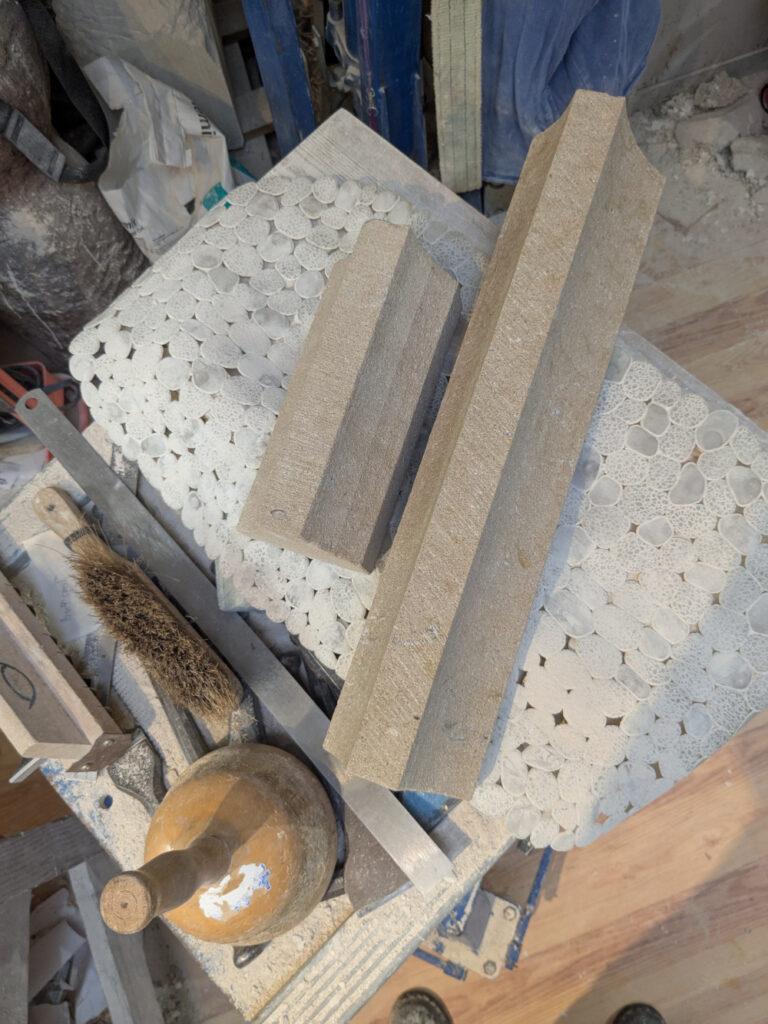
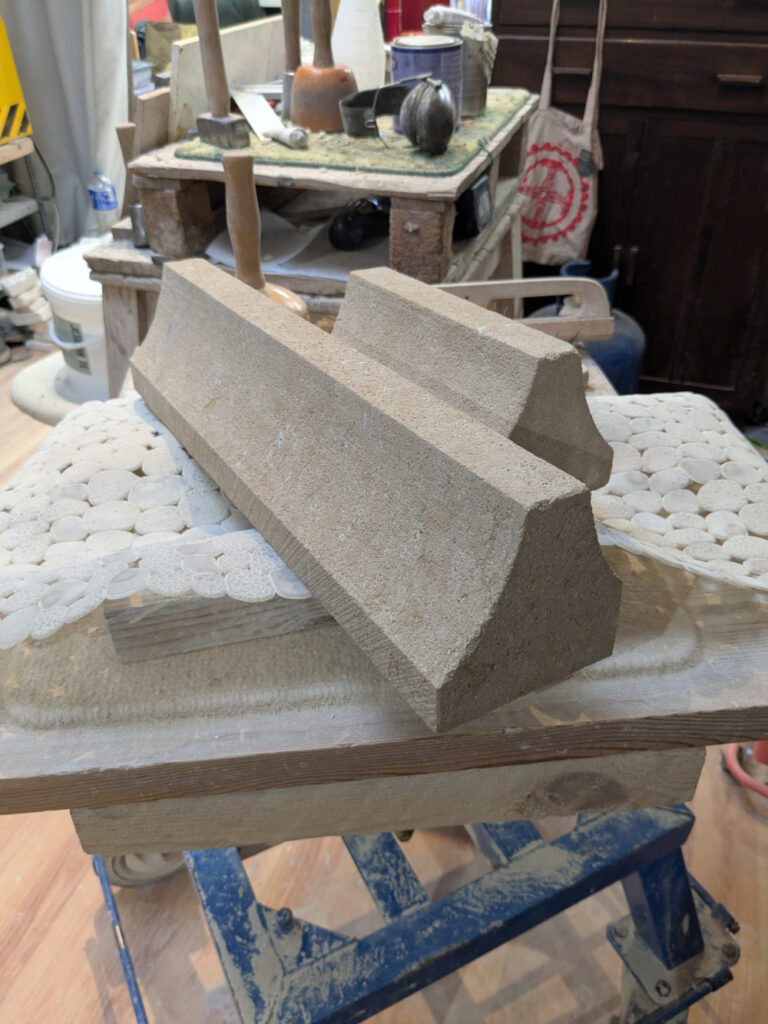
My colleague sent me these pictures of where it was destined for and the finished repair.

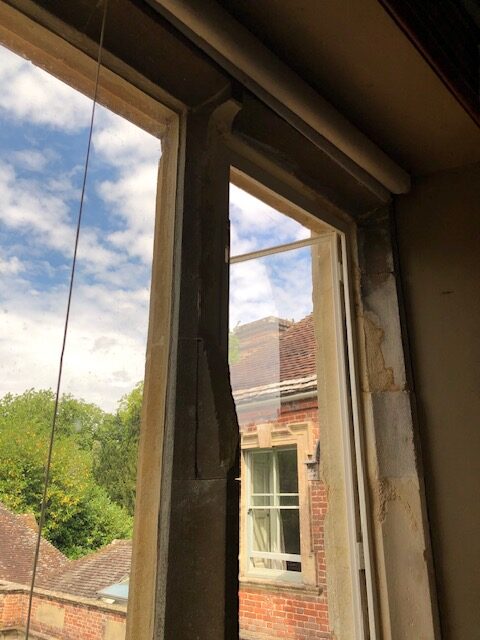
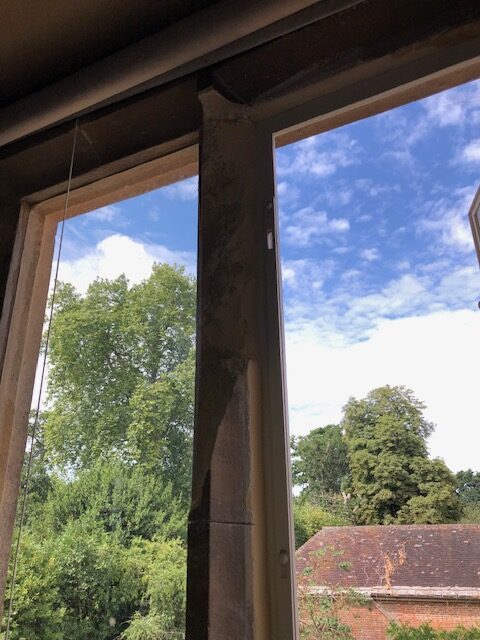

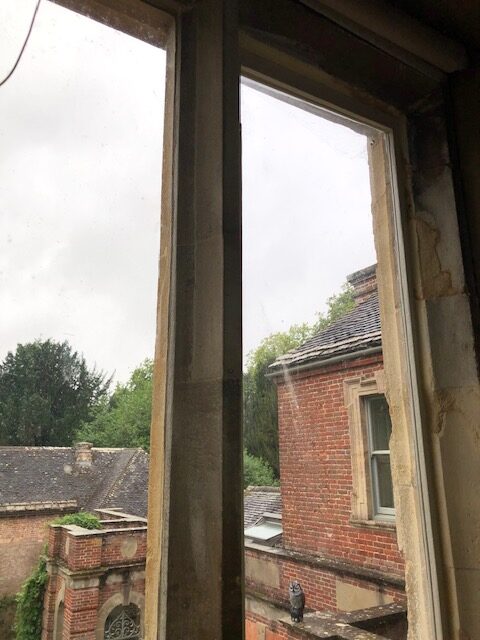
This next commission was a memorial for a former Master of the Worshipful Company of Masons.
I was very honoured to have been recommended for this carving.
As you can see, the first job was to carve the top into a curve. I then drew out the lettering to my customer’s specifications and set about carving the inscription.






The cap badge is the Royal Welch Fusiliers, my customer provided me with an image to work from, I scaled it to be the right size for the memorial. This was challenging to carve due to the fine detail and lettering, I brought out my trusty 1mm tungsten carbide tipped chisel for the fine detail.

This will be placed in the cemetery at Richmond.
Refurbishment of the plaque for Lieutenant Colonel Newman, a recipient of the Victoria Cross for his role in the attack on St Nazaire.
I was approached by a member of the local Royal British Legion to ask if I could repair and refurbish a memorial to a recipient of the Victoria cross.
The original plaque is made out of some type of resin, it was stuck to another plaque and was bowing and laminating apart. I didn’t want to force the two apart. I stuck them back together using epoxy resin, I mixed some slate dust with this to match the colour of the plaque. As the gaps were large, I put several applications on, the last one smoothing off the edges, before I sanded them and made them look seamless.




It had been attached to a low granite base with what appeared to be double sided tape, so in order for this to adhere to the new base, I cleaned off this adhesive.
I had a suitable piece of Portland stone that I had previously carved a large chamfer on. This was a job that I had done before covid, my customer no-longer wanted the piece of stone and told me that I could keep it and use it for something else. I am glad that it has found a use, this obviously helped to keep the cost of the project down as I didn’t need to charge for the stone or the work to carve the chamfer. I drilled holes in this surface and the back of the plaque to receive stainless steel threaded bar and more holes to act as a key for the glue.


The heavy Portland limestone base was attached to the granite base using epoxy resin and stainless steel threaded bar. I wanted to use this piece of stone to raise the plaque off the ground and make it more visible to the passing public.


Thankfully I had help to install this new base as it was very heavy, not likely to go anywhere for the foreseeable future.



I was honoured to be invited to the re-dedication ceremony and hear about Lieutenant Colonel Newman’s time as a POW during WWII.
I have advised that some earth be put across the existing concrete slab base to cover it up and level the ground, the ground rises either side of the memorial and this would make it look better with some plants and bulbs for Spring. The granite slab that the plaque was originally attached to couldn’t be removed easily and wasn’t high enough to easily read this remarkable story.
